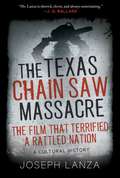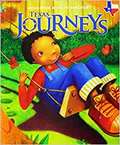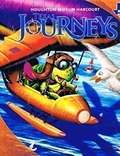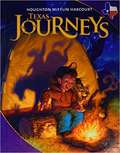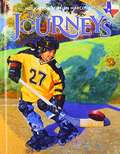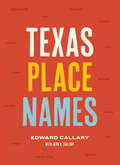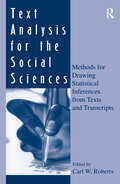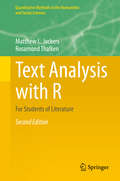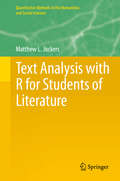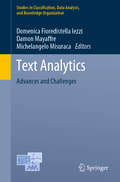- Table View
- List View
Texas Assessment Preparation [Grade 3] (Into Reading)
by Houghton Mifflin Harcourt Publishing CompanyNIMAC-sourced textbook
Texas Assessment Preparation [Grade 4]
by Houghton Mifflin Harcourt Publishing CompanyNIMAC-sourced textbook
Texas Assessment Preparation [Grade 7] (Into Reading)
by Houghton Mifflin Harcourt Publishing CompanyNIMAC-sourced textbook
Texas Assessment Preparation [Grade 8] (Into Reading)
by Houghton Mifflin Harcourt Publishing CompanyNIMAC-sourced textbook
The Texas Chain Saw Massacre: The Film That Terrified a Rattled Nation
by Joseph LanzaWhen Tobe Hooper’s low-budget slasher film, The Texas Chainsaw Massacre, opened in theaters in 1974, it was met in equal measure with disgust and reverence. The film—in which a group of teenagers meet a gruesome end when they stumble upon a ramshackle farmhouse of psychotic killers—was outright banned in several countries and was pulled from many American theaters after complaints of its violence. Despite the mixed reception from critics, it was enormously profitable at the domestic box office and has since secured its place as one of the most influential horror movies ever made. In The Texas Chainsaw Massacre and Its Terrifying Times, cultural critic Joseph Lanza turns his attentions to the production, reception, social climate, and impact of this controversial movie that rattled the American psyche. Joseph Lanza transports the reader back to the tumultuous era of the 1970s defined by political upheaval, cultural disillusionment, and the perceived decay of the nuclear family in the wake of Watergate, the onslaught of serial killers in the US, as well as mounting racial and sexual tensions. The Texas Chainsaw Massacre and Its Terrifying Times sets the themes of the film against the backdrop of the political and social American climate to understand why the brutal slasher flick connected with so many viewers. As much a book about the movie as the moment, Joseph Lanza has created an engaging and nuanced work that grapples with the complications of the American experience.
Texas Journeys (Grade 2, Level 2.1)
by The Editors at the Houghton Mifflin HarcourtYou are about to begin a journey into reading. Along the way you will meet many new characters, such as a superhero dog. You'll also travel to the world of outer space and other exciting places.
Texas Journeys (Grade 2, Level 2.2)
by The Editors at the Houghton Mifflin HarcourtYou're about to set out on a reading journey.On the way, you'll learn amazing things as you become a better reader.
Texas Journeys (Grade 3 Level 3.1)
by The Editors at the Houghton Mifflin HarcourtYou're about to set out on a reading journey that will take you from the streets of Japan to a fossil field in Canada, bursting with dinosaur bones! On the way, you'll learn amazing things as you become a better reader.
Texas Journeys Grade 5
by Houghton Mifflin HarcourtWhen you just turn the pages of the book, plenty of other reading adventures lie ahead that will take you from a virtual ride on a space shuttle to the countryside of Spain, where a knight battles a windmill. On the way, you will learn amazing things as you become a better reader.
Texas Place Names
by Edward Callary Jean K. Callary&“[A] linguist . . . takes readers on a tour across the state, using names and language to tell its history.&” ―Alcalde Was Gasoline, Texas, named in honor of a gas station? Nope, but the name does honor the town&’s original claim to fame: a gasoline-powered cotton gin. Is Paris, Texas, a reference to Paris, France? Yes: Thomas Poteet, who donated land for the town site, thought it would be an improvement over &“Pin Hook,&” the original name of the Lamar County seat. Ding Dong&’s story has a nice ring to it; the name was derived from two store owners named Bell, who lived in Bell County, of course. Tracing the turning points, fascinating characters, and cultural crossroads that shaped Texas history, Texas Place Names provides the colorful stories behind these and more than three thousand other county, city, and community names. Drawing on in-depth research to present the facts behind the folklore, linguist Edward Callary also clarifies pronunciations (it&’s NAY-chis for Neches, referring to a Caddoan people whose name was attached to the Neches River during a Spanish expedition). A great resource for road trippers and historians alike, Texas Place Names alphabetically charts centuries of humanity through the enduring words (and, occasionally, the fateful spelling gaffes) left behind by men and women from all walks of life. &“[A] quite useful book.&” ―Austin American-Statesman
Texas Tesoros de Lectura 2.2: Lectura/Artes del lenguaje
by Elva Duran Jana Echevarría David J. Francis Irma M. Olmedo Gilberto D. Soto Josefina V. TinajeroA Spanish Language Arts Book.
Texas Tesoros de Lectura - Lectura/Artes del Lenguaje
by Elva Duran Jana Echevarría David J. Francis Irma M. Olmedo Gilberto D. Soto Josefina V. TinajeroSpanish Literature Anthology textbook for 4th Grade
Texas Treasures: A Reading/Language Arts Program
by Macmillan Mcgraw-HillLiterature anthology textbook for 5th Grade
Texas Treasures: A Reading/Language Arts Program
by Macmillan Mcgraw-HillLiterature anthology textbook for 3rd Grade
Texas Treasures: British Literature
by Jeffrey D. Wilhelm Douglas Fisher Beverly Ann Chin Jacqueline Jones RoysterSelections of British literature.
Text Analysis for the Social Sciences: Methods for Drawing Statistical Inferences From Texts and Transcripts (Routledge Communication Series)
by Carl W. RobertsThis book provides descriptions and illustrations of cutting-edge text analysis methods for communication and marketing research; cultural, historical-comparative, and event analysis; curriculum evaluation; psychological diagnosis; language development research; and for any research in which statistical inferences are drawn from samples of texts. Although the book is accessible to readers having no experience with content analysis, the text analysis expert will find substantial new material in its pages. In particular, this collection describes developments in semantic and network text analysis methodologies that heretofore have been accessible only among a smattering of methodology journals. The book's international and cross-disciplinary content illustrates the breadth of quantitative text analysis applications. These applications demonstrate the methods' utility for international research, as well as for practitioners from the fields of sociology, political science, journalism/communication, computer science, marketing, education, and English. This is an "ecumenical" collection that contains applications not only of the most recent semantic and network text analysis methods, but also of the more traditional thematic method of text analysis. In fact, it is originally with this volume that these two "relational" approaches to text analysis are defined and contrasted with more traditional "thematic" text analysis methods. The emphasis here is on application. The book's chapters provide guidance regarding the sorts of inferences that each method affords, and up-to-date descriptions of the human and technological resources required to apply the methods. Its purpose is as a resource for making quantitative text analysis methods more accessible to social science researchers.
Text Analysis with R: For Students of Literature (Quantitative Methods in the Humanities and Social Sciences)
by Matthew L. Jockers Rosamond ThalkenNow in its second edition, Text Analysis with R provides a practical introduction to computational text analysis using the open source programming language R. R is an extremely popular programming language, used throughout the sciences; due to its accessibility, R is now used increasingly in other research areas. In this volume, readers immediately begin working with text, and each chapter examines a new technique or process, allowing readers to obtain a broad exposure to core R procedures and a fundamental understanding of the possibilities of computational text analysis at both the micro and the macro scale. Each chapter builds on its predecessor as readers move from small scale “microanalysis” of single texts to large scale “macroanalysis” of text corpora, and each concludes with a set of practice exercises that reinforce and expand upon the chapter lessons. The book’s focus is on making the technical palatable and making the technical useful and immediately gratifying. Text Analysis with R is written with students and scholars of literature in mind but will be applicable to other humanists and social scientists wishing to extend their methodological toolkit to include quantitative and computational approaches to the study of text. Computation provides access to information in text that readers simply cannot gather using traditional qualitative methods of close reading and human synthesis. This new edition features two new chapters: one that introduces dplyr and tidyr in the context of parsing and analyzing dramatic texts to extract speaker and receiver data, and one on sentiment analysis using the syuzhet package. It is also filled with updated material in every chapter to integrate new developments in the field, current practices in R style, and the use of more efficient algorithms.
Text Analysis with R for Students of Literature
by Matthew L. JockersText Analysis with R for Students of Literature is written with students and scholars of literature in mind but will be applicable to other humanists and social scientists wishing to extend their methodological tool kit to include quantitative and computational approaches to the study of text. Computation provides access to information in text that we simply cannot gather using traditional qualitative methods of close reading and human synthesis. Text Analysis with R for Students of Literature provides a practical introduction to computational text analysis using the open source programming language R. R is extremely popular throughout the sciences and because of its accessibility, R is now used increasingly in other research areas. Readers begin working with text right away and each chapter works through a new technique or process such that readers gain a broad exposure to core R procedures and a basic understanding of the possibilities of computational text analysis at both the micro and macro scale. Each chapter builds on the previous as readers move from small scale "microanalysis" of single texts to large scale "macroanalysis" of text corpora, and each chapter concludes with a set of practice exercises that reinforce and expand upon the chapter lessons. The book's focus is on making the technical palatable and making the technical useful and immediately gratifying.
Text Analytics: Advances and Challenges (Studies in Classification, Data Analysis, and Knowledge Organization)
by Domenica Fioredistella Iezzi Damon Mayaffre Michelangelo MisuracaFocusing on methodologies, applications and challenges of textual data analysis and related fields, this book gathers selected and peer-reviewed contributions presented at the 14th International Conference on Statistical Analysis of Textual Data (JADT 2018), held in Rome, Italy, on June 12-15, 2018. Statistical analysis of textual data is a multidisciplinary field of research that has been mainly fostered by statistics, linguistics, mathematics and computer science. The respective sections of the book focus on techniques, methods and models for text analytics, dictionaries and specific languages, multilingual text analysis, and the applications of text analytics. The interdisciplinary contributions cover topics including text mining, text analytics, network text analysis, information extraction, sentiment analysis, web mining, social media analysis, corpus and quantitative linguistics, statistical and computational methods, and textual data in sociology, psychology, politics, law and marketing.

